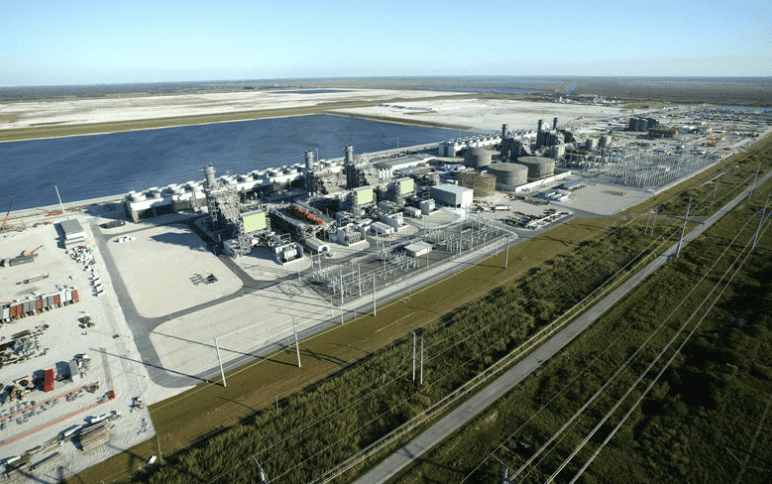Experts Say Gas-Fired Power Key to Reliable U.S. Electricity Supply
Energy analysts have said the increasing need for reliable baseload power generation means natural gas-fired power plants will become even more important as demand for electricity increases. Several experts who have spoken with POWER noted the availability of natural gas—the U.S. leads the world in natural gas production, far outpacing second-ranked Russia—will drive continued construction of gas-fired stations. Lucian Niemeyer, CEO of Building Cyber Security and former Assistant Secretary of Defense for Energy, Installations, and Environment, speaking last month at the P3 Electrified conference in San Diego, California, said "natural gas is going to grow ... there is no other solution" when it comes to providing reliable baseload power. "We cannot rely on renewables," said Niemeyer during his keynote address at P3, an event led by the P3 public-private partnership group at Access Intelligence and held in conjunction with POWER, also part of Access Intelligence. "We need to have reliable 24/7 power now. There are only a few distribution sources that can give us that baseload dispatchable power. Natural gas is one of them." Niemeyer said nuclear power and hydropower also fit that bill. Niemeyer added, "We've grown wind and solar on the back of baseload dispatchable power, which is predominantly natural gas."
'Natural Gas is Not the Enemy
Mary Landrieu, a former U.S. senator from Louisiana, who is now a senior policy advisor for the law firm Van Ness Feldman and co-chair of the Natural Allies Leadership Council, told POWER that "natural gas in America is not the enemy. The majority of the emissions reductions of the United States in the last 10 years are directly attributed to more natural gas being used and less coal.” Landrieu, speaking recently on The POWER Podcast, said, "We have over a hundred-year supply [in the U.S.]. Number two: we have an amazing pipeline infrastructure that can move gas from where we find it to the people that need it. Landrieu added, "But also, what's so important is [that] natural gas, because it's relatively inexpensive, [means] we can keep the cost of electricity lower. So, it's available, it's plentiful, it's affordable, and when connected with wind and solar, we can really build a modern and low-emissions electric grid for the country.” Said Niemeyer, "Artificial intelligence is going to eat up an amazing amount of power over the next five or six years." Niemeyer said nuclear plants can help supply some of that demand, "but we're still five to seven years away [from having more nuclear], and you want to start putting in data centers around the country right now. So, what are we looking at? We're looking at geothermal, we're looking at natural gas, we're looking at anything we can get that will be reliable."
Group Says 133 New Plants in the Works
S&P Global Market Intelligence in May of this year said that U.S. electric utilities and investors had announced development of 133 new natural gas-fired power plants. That includes 10 new gas-fired units from Duke Energy, which in a January 2024 filing said it expects to have those plants—with combined capacity of 9 GW—enter service by 2033. [caption id="attachment_224185" align="alignnone" width="640"]

The West County Energy Center in Palm Beach, County, Florida, is the largest natural gas-fired power plant in terms of generation capacity in the U.S. Source: Florida Power & Light[/caption] U.S. government data shows that the largest gas-fired power plant in this country is the West County Energy Center in Palm Beach County, Florida. The 3,750-MW facility, operated by Florida Power & Light, opened in 2009. The plant received a POWER Top Plant award in 2010. Some of the largest U.S. gas-fired plants, in terms of generation capacity, being planned are in Texas. Those include the 1,158-MW Orange County Advanced Power Station, being built by Entergy and scheduled to come online in 2026. Sandow Lakes Energy Co. plans a 1.2-GW plant in Texas that could be online in 2028.
Largest Global Gas-Fired Stations
The world's largest gas-fired complex is the Jebel Ali Power and Desalination Plant, located in the United Arab Emirates. Jebel Ali has 8,595 MW of generation capacity, spread among nine plants in the desalination facility. The Surgutskaya GRES-2, or Surgut-2, plant in Surgut, Russia, is often referred to as the world's largest gas-fired power plant. The 5,597-MW station is owned and operated by E.ON Russia. The plant has six 800-MW units that were commissioned between 1985 and 1988. Two more units, with combined capacity just below 800 MW, entered service in 2011. Surgut-2 ranks just ahead of the Futtsu power station in Chiba, Japan. Futtsu, owned and operated by Tokyo Electric Power Co. (TEPCO), has 5,040 MW of generation capacity. The facility burns liquefied natural gas (LNG). The station has several units among four plants that have been brought online between 1986 and 2010. Japan also is home to the Kawagoe power station, operated by Chubu Electric Power Co. The station, located in Kawadoe, Mie, Japan, has 4,802 MW of capacity. It also burns LNG in units brought online between 1989 and 1997. The world's fourth-largest gas-fired power plant is Dah-Tarn, also known as Tatan, in Taiwan. It is owned and operated by Taiwan Power Co. (Taipower). The 4,384-MW station, featuring Mitsubishi turbines, was built in two stages between 2005 and 2009. The Chita power plant in Chita, Aichi, Japan, is considered the world's fifth-largest gas-fired station. It has 3,996 MW of generation capacity. The plant, which has six LNG-fired units, first entered operation in 1968. —Darrell Proctor is a senior editor for POWER (@POWERmagazine).

 Yahoo Finance
Yahoo Finance 